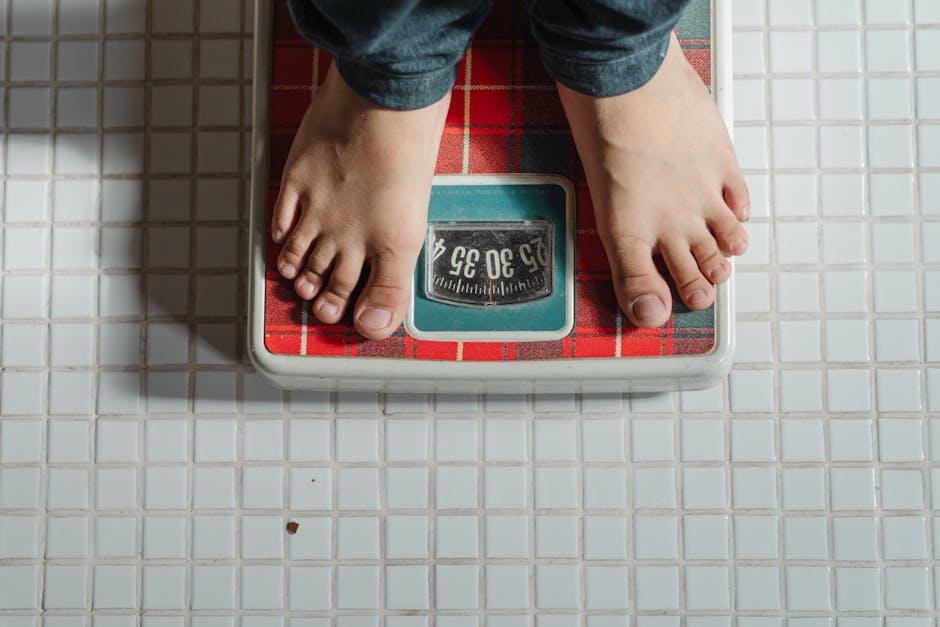Embarking on a weight loss journey is a transformative experience, often accompanied by numerous physical and emotional milestones. However, while the primary focus is typically on shedding pounds, an equally important aspect is monitoring changes in muscle mass. Understanding how to accurately assess muscle mass is crucial, as it plays a vital role in maintaining metabolic health, ensuring functional strength, and achieving a balanced physique. This article provides an authoritative guide on the various methods available to evaluate muscle mass changes, offering insights into the most effective techniques and tools. By gaining a comprehensive understanding of muscle mass assessment, individuals can make informed decisions, optimize their weight loss strategies, and ensure their journey leads to sustainable, long-term health benefits.
Understanding Muscle Mass: Key Metrics and Measurement Techniques
In the realm of weight loss, understanding the nuances of muscle mass is crucial for accurately tracking your progress and maintaining a healthy body composition. Key metrics such as lean body mass, body fat percentage, and muscle density offer valuable insights into how your body is transforming. To effectively measure these metrics, several techniques are at your disposal:
- Bioelectrical Impedance Analysis (BIA): A popular method found in many smart scales, BIA sends a low-level electrical current through your body to estimate fat-free mass.
- Dual-Energy X-ray Absorptiometry (DEXA): Often considered the gold standard, DEXA provides a comprehensive overview of body composition, including bone density, fat, and lean muscle mass.
- Hydrostatic Weighing: This technique involves submerging in water to measure body density and calculate body composition, offering highly accurate results.
- Skinfold Calipers: By measuring the thickness of skinfolds at various body sites, this method estimates body fat percentage and indirectly assesses muscle mass.
Each of these methods offers unique insights, allowing you to track changes over time and adjust your fitness regimen accordingly. Choose a method that aligns with your goals and resources to ensure a comprehensive understanding of your muscle mass dynamics during your weight loss journey.

Tracking Progress: Tools and Technologies for Monitoring Muscle Changes
When embarking on a weight loss journey, it’s crucial to not only track the numbers on the scale but also understand the changes in your muscle mass. Advanced tools and technologies are available to help monitor these changes accurately, ensuring that your weight loss is healthy and sustainable. Here are some cutting-edge methods and devices you can consider:
- Bioelectrical Impedance Analysis (BIA): This non-invasive method uses electrical signals to estimate body composition, including muscle mass. Devices range from handheld gadgets to smart scales that sync with your smartphone.
- Dual-Energy X-ray Absorptiometry (DEXA): Originally used for bone density scans, DEXA provides a comprehensive analysis of body composition, offering detailed insights into muscle, fat, and bone mass.
- Ultrasound Imaging: Utilizing sound waves, this technique allows for precise measurements of muscle thickness and changes over time. While traditionally used in medical settings, portable versions are now available for personal use.
- Wearable Fitness Trackers: Many modern fitness trackers can estimate muscle mass and changes by analyzing your activity level, heart rate, and other physiological data.
By incorporating these tools into your routine, you can gain a holistic view of your muscle changes and make informed decisions about your diet and exercise regimen. Remember, the goal is to lose fat, not muscle, so keeping an eye on muscle mass is vital for achieving a leaner, healthier body.

Interpreting Results: Analyzing Data for Effective Muscle Mass Assessment
When evaluating muscle mass changes, it’s crucial to understand the nuances behind the numbers. Start by employing tools like DEXA scans, bioelectrical impedance analysis, or ultrasound to gather precise data. Each method has its own strengths, with DEXA providing a comprehensive breakdown of body composition, while bioelectrical impedance is more accessible for regular monitoring. After obtaining your data, focus on key metrics such as lean body mass, muscle-to-fat ratio, and total body water.
To effectively interpret these results, consider the following factors:
- Baseline Measurements: Establish a reliable baseline to compare future results against. This will provide a clearer picture of your progress.
- Consistency: Ensure measurements are taken under similar conditions each time—same time of day, hydration status, and equipment used.
- Trends Over Time: Focus on long-term trends rather than day-to-day fluctuations, as muscle growth is a gradual process.
- Comprehensive Analysis: Combine quantitative data with qualitative assessments, such as changes in strength, endurance, and how you feel physically.
By thoroughly analyzing these elements, you can make informed decisions and adjustments to your weight loss journey, ensuring muscle mass is maintained or increased effectively.
Strategic Adjustments: Tailoring Your Weight Loss Plan to Preserve Muscle
To effectively tailor your weight loss plan while preserving muscle mass, it’s crucial to incorporate strategies that focus on maintaining lean tissue. Start by ensuring that your diet is protein-rich, as adequate protein intake supports muscle retention during calorie deficits. Strength training is another indispensable component, as it stimulates muscle growth and counters muscle breakdown. Consider including a variety of exercises targeting different muscle groups to maximize muscle preservation.
- Prioritize compound movements such as squats, deadlifts, and bench presses.
- Incorporate progressive overload to continually challenge your muscles.
- Monitor your protein intake to ensure you’re meeting your daily requirements.
- Stay hydrated to support muscle function and recovery.
It’s equally important to regularly assess your muscle mass to gauge the effectiveness of your plan. Utilize tools like bioelectrical impedance analysis or DEXA scans for precise measurements. Tracking your progress through photos and circumference measurements can also provide valuable insights. Adjust your regimen based on these assessments to ensure you are on the right path toward achieving your weight loss goals without sacrificing muscle mass.
